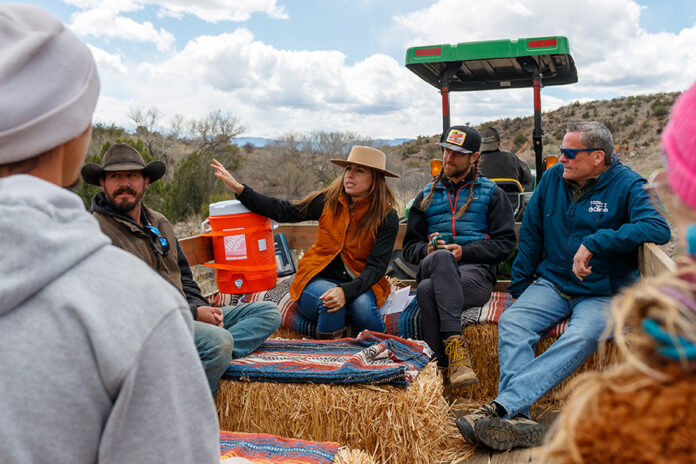Rancho Almasomos in Cornville is attempting to become Arizona’s first certified biodynamic farm. Kat Massey purchased the farm’s 131 acres in 2021.
Massey had previously worked at the Chicago Board of Trade in the grain industry, where she was able to experience how commercial farming operated, as well as investing in real estate and flipping houses. Massey later moved to Sedona and realized the potential of things she could do in this area.
“The modern-day food industry is not done in the most ethical of ways,” Massey said. “The unhealthy food that we’re eating is slowly harming us more than anything else, which is different from the past when our food used to nourish us, and we need to go back to that. We need to start producing good-quality, nutritional food that supports our being in a much better way, because when we rely on the larger industrial food industry to feed us, we then are at the mercy of whatever is in that food and oftentimes find ourselves locked into a system that requires us to fix our bodies that have been affected by that food.”
Massey’s goal for Rancho Almasomos is to practice biodynamic farming, an agricultural method that is holistic, ethical and ecologically sensitive. The key to biodynamic farming is having nutrient rich soil, which in turn produces nutrient rich food.
Obtaining biodynamic certification is a three-year process, and Rancho Almasomos is in its first year of the program. Establishing a complete biodynamic farm takes around seven years.
The farm currently has three fields, including an orchard, which was the farm’s first project. So far, Massey and staff have planted nine varieties of fruit trees, including apricots, apples and persimmons. Massey stated that biodiversity is key to biodynamics.
The farm’s animals include three goats, 20 chickens, a donkey, a miniature horse, a pregnant cow named Patches and two ranch dogs that guard the livestock.
Massey explained that designing the farm involved being conscious of any changes to the land. It will use responsible building materials, such as rammed earth, for additional structures. Potential cabins or casitas will be built into the incline of the farm’s hills, allowing them to disappear from sight and improving their energy efficiency.
Massey is considering an agritourism business model to ensure the farm’s financial stability. She explained that larger farms have made it very difficult for smaller ones to support themselves. Letting guests visit the farm will provide an additional source of revenue to assist in maintaining ethical and sustainable practices. Massey suggested the possibility of building glamping sites as well as growing grapes, having a mule team, hosting movie nights, creating an apiary and hosting farm to table events and workshops on useful skills such as how to can food.
In the near future, Massey wants to add 1,000 agave plants on five acres, as agave naturally grows in the region and the farm’s philosophy involves emphasizing native plants. Apart from its uses in manufacturing tequila, which Massey joked courses through her veins, it can be used to offset carbon dioxide and as animal fodder, as it contains much more protein than other common feeds.
The farm will eventually be open to the local community and offer memberships. Massey said that she wanted everyone to have the chance to enjoy the farm’s land, including its perennial creek with two protected fish species. A large extinct volcano overlooks the farm and Massey and her team have found potsherds there, indicating that people had thrived on this land for hundreds of years.
One of the goals of the farm is to motivate people and to allow them to reconnect with their food as well as inspire them with regard for a slower pace of life.
Massey shared a story of asking a child where their hamburger comes from and being told “the grocery store” in reply. She stated that the farm will give kids an opportunity to see where their eggs come from and where their lettuce grows and to understand what it takes to feed a cow.
“Our goal here is to really reconnect people to the process of where they’re getting their food and help them understand the importance of nutritional and good-tasting food,” Massey said. “Also to remind people that they can do it themselves. What we’re doing down here is nothing different than what they can do in their own backyard. It doesn’t have to be 200 orchard trees, it can be three fruit trees that can have that same biodiversity and that same positive effect on the nutritional value that you’re feeding your body.”
Massey said the farm will be hosting many events in the future. On Saturday, April 22, they will hold an Earth Day celebration with a biodynamic presentation, a tree replanting, a live band and children’s activities.



